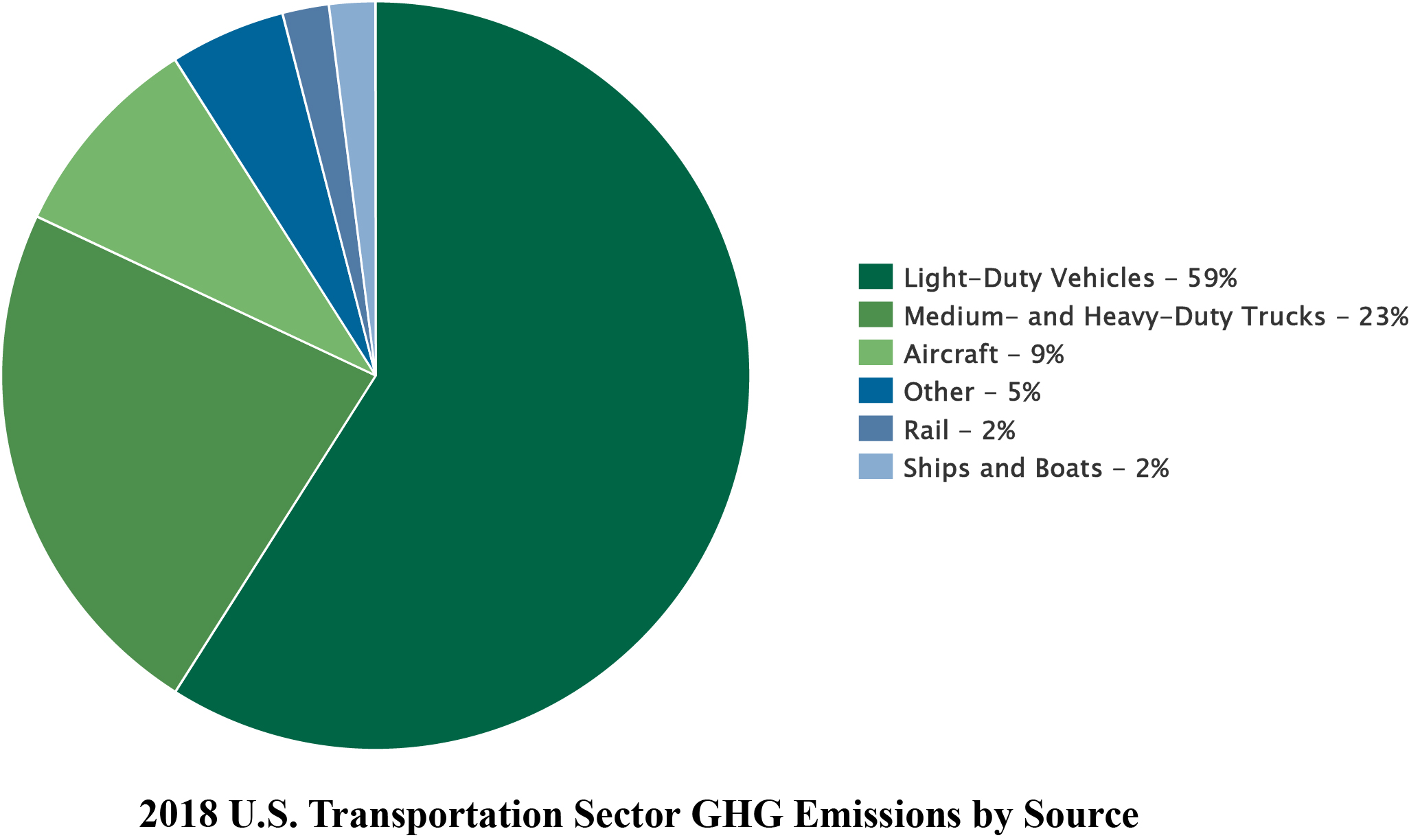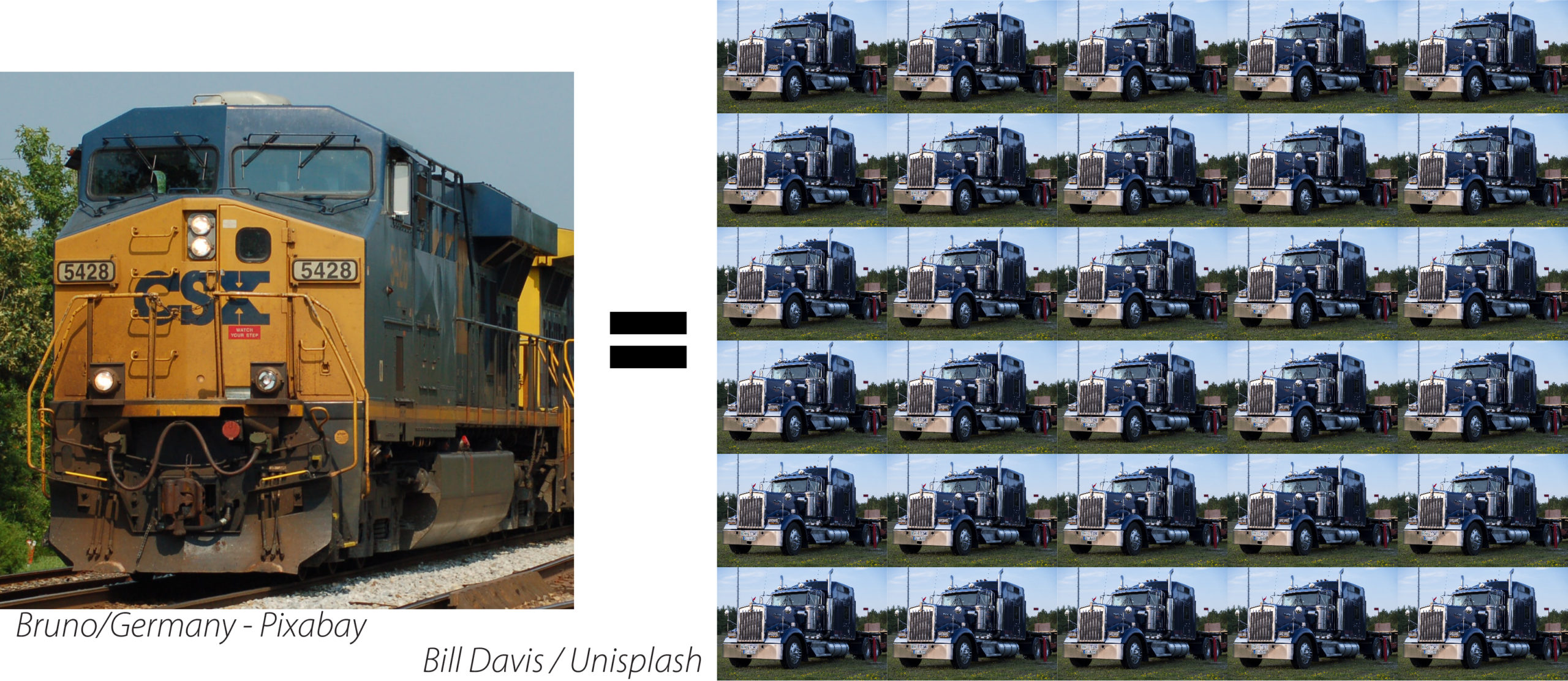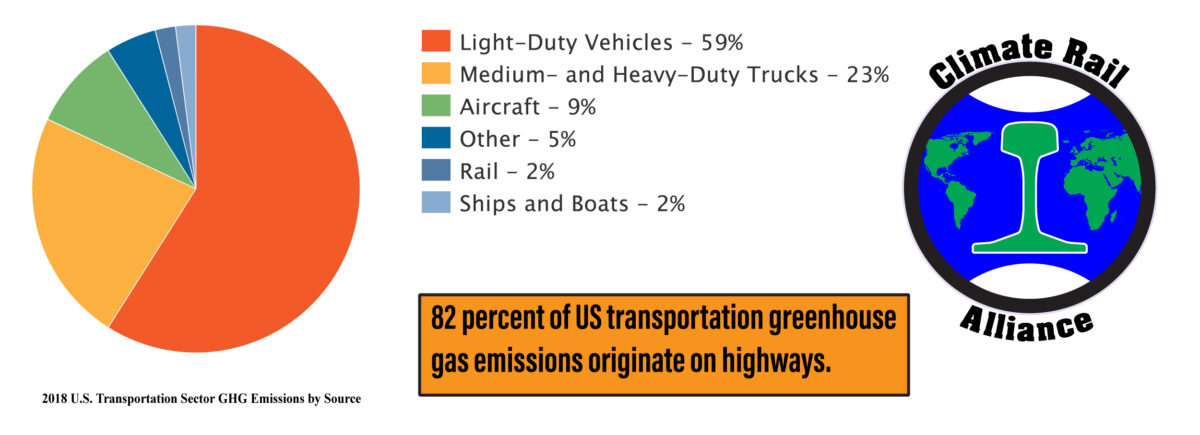That is the question.
Time is running out.
That is an understatement.
We have less than ten years to reduce greenhouse gas emissions by 50 percent. Failure to do so may make our dire situation irretrievable.
Among the proposed measures to address the climate emergency are High Speed Rail and electrification of the rail network. We have already addressed High Speed Rail as an inappropriate climate emergency response. How about electrification?
Highway transportation is responsible for 82 percent of transportation greenhouse emissions. Rail is responsible for two percent.


It is easy to look at a locomotive, overwhelmingly huge and noisy with an enormous fuel tank and exhaust stacks and think that this must be electrified. However, stepping back to look at the overall scheme of things may yield a different conclusion.

The first essential step is to move as much highway traffic to rail as possible in the shortest possible amount of time.
Addressing climate change, making the changes needed for a 50 percent reduction in emissions in the next nine years will require an enormous funding effort. Funding must address the most effective, quick return solutions.
The US rail network and the rail transportation business are not currently configured or equipped for the amount and type of traffic that must be moved from highway to rail. A huge amount of work and funding is needed to configure the railroad network and the railroad business for frequent, convenient, and reliable passenger and freight service.
That effort must come first, not at some future time at the expense of early electrification efforts.
TAW

Back to the Future: Freight to Cross Finance Passenger
To build on our electrification conversation, and answer Tom’s challenge to us that, “The first essential step is to move as much highway traffic to rail as possible in the shortest possible amount of time…(we need) Fast, frequent truck shuttle and rolling truck stop intermodal trains with provisions for revenue passengers.” The term rolling highway sums up what Tom is saying, (see the excellent RAlpin promotional video https://ralpin.com/company/ralpin/swissalps/).
Before ruinous government subsidies for competing modes during the equally ruinous Interstate Commerce Commission period, (1887-1980), preceding Amtrak, (1971), freight cross financed passenger.
To fulfill Tom’s freight challenge, we may cross finance passenger by flipping the script on state supported passenger services. The private railroads will not operate passenger services on their own but they will allow state supported passenger services when the state invests in track and pays agreed access fees, (e.g., the excellent model provided by the California Capitol Corridor). The private railroads will not operate rolling highway service so we flip the script and press for planning funds and construction bonds in the upcoming infrastructure bill in Congress for states to plan and construct track and electrification infrastructure so that train operating companies, (TOCs, discussed in Tom’s Climate Emergency/Trains), may form to offer rolling highway services.
Rolling highway services may divert from the highway a significant percentage of the 98.25% of truck traffic NOT handled in conventional, (i.e., double stack and piggyback), rail intermodal services, (statistic provided to me by Larry Gross, Gross Transportation Consulting in 2016 https://intermodalindepth.com).
This new spectrum of rolling highway rail freight volume and revenue, after paying operating and maintenance costs, may likely, we need to find out more, help repay a significant portion of track and electrification construction bonds. Passenger services, which will include “Express freight, box car and intermodal,” which Tom check lists, will share the same track and electrification infrastructure with rolling highway service to repay a portion of those construction bonds, too. Private freight railway operating efficiencies for conventional intermodal and carload services will be created, too, operating on the same tracks, value that can be measured and forecast. These new efficiencies, which developed when the states and federal government funded competitor modes, are all part of the horse trading that will play into draft bills and amendments for planning funds and construction bonds in the upcoming infrastructure bill.
Please read through the RAIL Solution grant application to the Oregon Department of Transportation to learn more about rolling highway service, (https://steelinterstate.org/sites/default/files/ODOT Research – Open Intermodal – Stage 1 Problem Statement 201115.pdf). The objective in the Pacific Northwest, if our grant application is funded, and the results are positive, is to immediately implement a demonstration service on existing Cascade Corridor track infrastructure, with conventionally available equipment, with at least one terminal in Washington, and one in Oregon. If the demonstration service results are positive, then we invest heavily for greater volumes and economies of scale. It’s a win for all parties. We are two of the fifty “laboratories of democracy,” wrote Associate Justice of the Supreme Court Louis Brandeis in 1932, “a state may, if its citizens choose, serve as a laboratory; and try novel social and economic experiments without risk to the rest of the country.” If it is successful in one or more states, then it bodes well for the nation.
The grassroots electorate is a key center of power, (think of all those jobs we can create!), that will be essential to get planning funds and construction bonds included in the upcoming infrastructure bill, reported to be the next order of business in Congress after the $1.9 trillion pandemic relief bill is passed into law
My nonprofit RAIL Solution leveraged the grassroots electorate to cut its eye teeth with a successful campaign to prevent the privatization, widening, and tolling of I-81 in Virginia’s Shenandoah Valley, (read the short history http://railsolution.org/about_us/history/). But we only won the battle, not the war, for rolling highway service. With our successful removal of the threat that I-81 would be privatized, widened, and tolled our grassroots support dissipated. It’s always easier for the grassroots electorate to vote against something than to proactively create an alternative solution!
To win the war, to win planning funds and construction bonds in the upcoming infrastructure bill, I need help with the grassroots electorate in Oregon to:
* Organize Oregonians to leverage our elected officials, from city to federal level to:
* Support our OR DOT rolling highway grant application, (https://steelinterstate.org/sites/default/files/ODOT Research – Open Intermodal – Stage 1 Problem Statement 201115.pdf, we call it Open Intermodal in the application), or to allocate other funds if the grant is declined.
* And we need applications similar to our OR DOT rolling highway grant application in 49 other states, too!
* Precipitate from the Oregon Passenger Rail Project for Cascade Corridor service draft final Environmental Impact Statement, (https://www.oregonpassengerrail.org/files/library/documents/deis-publicdraft-cip-online.pdf):
* Merger with the Climate Rail Alliance work to get full funding for Cascade Corridor service in Washington State.
* A final Environmental Impact Statement and funding.
* Obtain letters of interest for rolling highway service from those who would be its customers. Read the Owner-Operator Independent Drivers Association support letter I obtained, (https://steelinterstate.org/sites/default/files/OOIDA Support Letter.pdf, in which the term land ferry is used instead of rolling highway), that more be learned about trains for truckers who operate fleets of their own trucks of any type and size, or product/commodity. They drive their trucks onto a rolling highway so that they can increase their productivity. OOIDA’s letter is the type of letter we need from:
* Trucking company owners
* Companies who operate their own truck fleets
* Anyone who purchases freight services
The objective is to generate sufficient new rail freight volume and revenue to help pay operating, maintenance, and track and electrification construction bond costs. When states and the federal government commit to track and electrification infrastructure improvements, then private entities can form Train Operating Companies to offer rolling highway service.
Let’s fulfill Tom’s challenge that, “The first essential step is to move as much highway traffic to rail as possible in the shortest possible amount of time.”
Have I made the case for and charted a path to obtain planning funds and construction bonds for freight tracks and electrification to cross finance passenger, how do you suggest we modify this action statement?
Thanks in advance for anyone’s help for my work in Oregon!
Best Regards,
Robinson Foster, Western Affairs
Steel Interstate Coalition, (http://steelinterstate.org/), a project of RAIL Solution, (http://railsolution.org), a nonprofit 501(c)(3)
West Linn, OR 97068